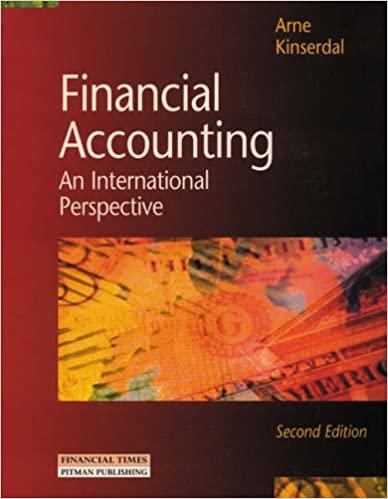Question
Laker Company reported the following January purchases and sales data for its only product. For specific identification, ending inventory consists of 380 units from the
Laker Company reported the following January purchases and sales data for its only product. For specific identification, ending inventory consists of 380 units from the January 30 purchase, 5 units from the January 20 purchase, and 25 units from beginning inventory.
Date
Activities
Beginning inventory
January 1
January 10
January 20
January 25
Sales
Purchase
Sales
January 30
Purchase
Fotals
Units Acquired at Cost
240 units @
170 units @
$16.50 =
$ 15.50 =
$ 3,960
190 units
2,635
190 units
@
$25.50
380 units
$ 15.00 =
Units sold at Retail
5,700
380 units
$25.50
$ 12,295
790 units
Assume the perpetual inventory system is used.
Required:
1. Complete the table to determine the cost assigned to ending inventory and cost of goods sold using specific identification.
2. Determine the cost assigned to ending inventory and to cost of goods sold using weighted average.
3. Determine the cost assigned to ending inventory and to cost of goods sold using FIFO.
4. Determine the cost assigned to ending inventory and to cost of goods sold using LIFO.
 Required information Use the following information for the Exercises 3-7 below. (Algo) [The following information applies to the questions displayed below.] Laker Company reported the following January purchases and sales data for its only product. For specific identification, ending inventory consists of 380 units from the January 30 purchase, 5 units from the January 20 purchase, and 25 units from beginning inventory. Exercise 5-3 (Algo) Perpetual: Inventory costing methods LO P1 Assume the perpetual inventory system is used. Required: 1. Complete the table to determine the cost assigned to ending inventory and cost of goods sold using specific identification. 2. Determine the cost assigned to ending inventory and to cost of goods sold using weighted average. 3. Determine the cost assigned to ending inventory and to cost of goods sold using FIFO. 4. Determine the cost assigned to ending inventory and to cost of goods sold using LIFO
Required information Use the following information for the Exercises 3-7 below. (Algo) [The following information applies to the questions displayed below.] Laker Company reported the following January purchases and sales data for its only product. For specific identification, ending inventory consists of 380 units from the January 30 purchase, 5 units from the January 20 purchase, and 25 units from beginning inventory. Exercise 5-3 (Algo) Perpetual: Inventory costing methods LO P1 Assume the perpetual inventory system is used. Required: 1. Complete the table to determine the cost assigned to ending inventory and cost of goods sold using specific identification. 2. Determine the cost assigned to ending inventory and to cost of goods sold using weighted average. 3. Determine the cost assigned to ending inventory and to cost of goods sold using FIFO. 4. Determine the cost assigned to ending inventory and to cost of goods sold using LIFO Step by Step Solution
There are 3 Steps involved in it
Step: 1

Get Instant Access to Expert-Tailored Solutions
See step-by-step solutions with expert insights and AI powered tools for academic success
Step: 2

Step: 3

Ace Your Homework with AI
Get the answers you need in no time with our AI-driven, step-by-step assistance
Get Started


